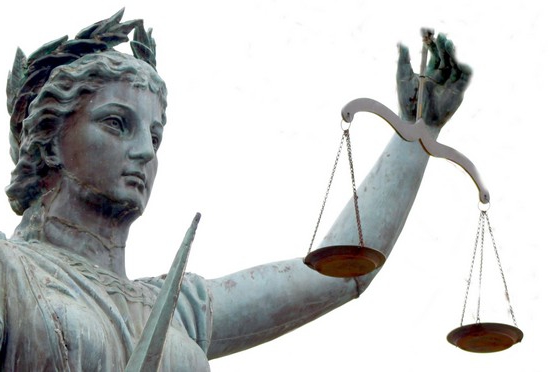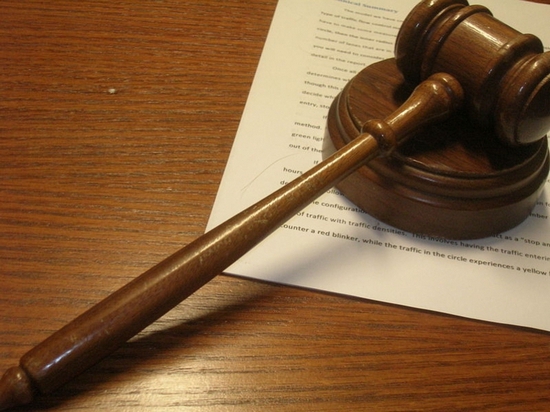The Constitution of Russia, as well as the Code of Civil Procedure, enshrines the right of citizens to judicial protection. In case of violation or contestation of any interested party may require legal safeguards. The main form of this protection is the lawsuit. Consider this process in more detail.

General information
Claim proceedings constitute the bulk of the disputes examined in the courts of general jurisdiction. They arise from labor, family and other legal relations. As practice shows, lawsuit proceedings are considered the main type of dispute resolution in the framework of civil law and sets the most general principles for the proceedings.
Distinctive features
The lawsuit in civil proceedings has a certain means of appeal to a legal authority. It constitutes the basic prerequisite for the commencement of proceedings. The special lawsuit has no legal disputes. As a result of this, there are no parties expressing opposing interests. Violation or non-fulfillment of the rights of any individual starts a lawsuit in a civil proceeding. In this case, a person is forced to turn to a third, impartial side. She needs to sort out the argument. The parties and the legal authority, acting as correlative, interfacing elements, constitute the essence of the lawsuit. In this case, the presence of one person provides for the presence of a second, performing the opposite task.
Controversial state
The concept of lawsuit involves the presence of at least two disputing parties. At the same time, one makes demands, and the other answers them. Accordingly, the first acts as a plaintiff and the second as a defendant. The lawsuit is adversarial. This is due to the presence of a dispute about interest (law).
The lawsuit provides for various outcomes of the proceedings. In particular, they include an amicable agreement, a decrease or increase in requirements, the ability to file a counter complaint, etc. The enforcement of proceedings is carried out at the expense of the relevant institution. Speaks about it Art. 139 GPC. In particular, it says that a judge (court) may, at the request of persons involved in a dispute, or at its own initiative, take measures to secure a claim. The presence of this legal institute most of all provides a guarantee of the possibility of realizing the right to defense.

Signs of action
They form clear differences between this type of proceedings and others. These include:
- The presence of a mandatory membership. It includes parties (defendant and plaintiff) that have opposing legal interests.
- The presence of substantive requirements. It follows from the contested or violated right of one of the parties. The demand in this case is subject to consideration through a special form - a claim.
- The presence of a dispute over subjective law or interest protected by law.
- Providing parties to the dispute certain guarantees. Moreover, they are equal in the course of the proceedings.
- The ability to make a counterclaim, which acts as a measure of protection of disputed / violated rights or interests protected by law.
- The presence of an adversarial nature of the resolution of the dispute.Moreover, the proceedings are based on the principle of dispositivity.
- The ability to dispose of the material rights involved in the process. The implementation of this paragraph is carried out through the conclusion of an amicable agreement, reducing or increasing requirements. Also, as a method of disposing of disputed law, the termination of the lawsuit is advocated. It may be caused by a waiver of requirements.
Functions
Timely and correct consideration of disputes, their resolution to ensure the protection of the disputed or violated rights, legitimate interest or freedoms of a person, organization, state, its subjects, municipalities and other participants in labor, family and other legal relations are the main tasks that the lawsuit must fulfill.
Article GIC, therefore, as the most significant and fundamental goal of this kind of proceedings calls the protection of the rights and interests of individuals and organizations protected by law. Carrying out their functions, legal authorities contribute to the correct understanding and implementation of the norms, the formation of the direction of legal practice. A decision on a dispute acts as an act of justice. It is issued by the appropriate authority on behalf of the state.

Remedy
The demand directly acts as it - the claim. The considered form of protection of interests and rights is considered the most suitable for the implementation of proper consideration and resolution of disputes with decision-making. In accordance with statistical data, the lawsuit proceedings prevail among other types. Using the means of protection used in it, the safety of various aspects of society is ensured. In particular, this relates to the relationship between consumers and persons performing the work (service), intangible goods (honor, reputation, dignity) and other things. As a participant in these legal relations always acts as a citizen - an ordinary individual. Often, it does not have the proper level of legal knowledge, which would allow it to independently protect and ensure the safety of its interests and rights.
Claim Procedure
Within the framework of legal discipline, the features of the considered form of ensuring and protecting interests and rights have been studied quite fully. In this regard, certain rules of action are developed. They are sequentially determined by law. In particular, it is prescribed that the parties to the dispute may independently or through their legal representatives participate in the consideration of claims in the courtroom. At the same time, they were provided with sufficient legal grounds to influence the course of the proceedings and the requirements for a legally correct decision. The consideration of the dispute begins accepting the statement of claim for production.
A party whose rights or interests have been restricted or violated shall thus present its claims. The preparation of the application is carried out according to the model established by law. During a certain period, the legal authority examines the submitted papers, verifies their authenticity. When establishing the authenticity of all materials, compliance with the requirements of the letter of the law, the first meeting is appointed. There are arguing parties. Participants are called by sending summons.
During the meeting, the plaintiff presents and substantiates his claims. At the end of the review, the court makes a decision. The judge may satisfy the requirements or refuse to fulfill them. The parties are entitled to appeal the decision to a higher authority. In case of insufficient materials or when new ones appear, the court has the right to postpone the meeting for a more detailed study of the newly received information. The parties may also come to a peace agreement.In this case, the requirements will be partially satisfied.

Review Time
The term of the lawsuit is different. However, the law establishes certain periods for the adoption of requirements, consideration of materials, hearings, decision-making, as well as their entry into force. The statute of limitations of the proceedings sets the limits within which one of the parties (or both) can appeal the decision, present counterclaims, refuse them or change them. After this period, the review will not be resumed, which suggests the beginning of a new trial.
Claim
It is carried out through a lawsuit. It represents a certain claim, which is addressed to the state in the person of the executive body, about the decision, legally and objectively correct. When applying to the court with a request to ensure the protection of their rights and interests, the plaintiff thus disagrees with the actions of the defendant. In this case, many people have a logical question: "To whom are requirements nevertheless addressed?"
The doctrine of the "claim"
The concept of a claim as such has been known since Roman law. Along with this, the definition of the claim, which was given in antiquity, has been preserved and is widely used today. The content of the claim is the right of the subject to realize through legal order their own demand, will, desire. However, domestic researchers at the end of the 19th century point to the existence of two meanings.
In particular, a lawsuit is an opportunity to legally protect existing civil law through the courts. In accordance with the second meaning, a claim in this form represents a certain action of a person who has applied to the executive body so that he, in turn, obliges the defendant to fulfill what is proper to him or recognizes the right of the injured party. For a long time, Soviet procedural practice used an approach based on which the lawsuit was considered as an integral element with material and legal aspects. Today, the most common is the definition in accordance with which this form represents the requirement of one person to another to protect a protected interest or opportunity. To make a claim, the plaintiff appeals to court of first instance.

Opinions of researchers
Chechot, Ivanova, Dobrovolsky and other specialists adhered to the point of view that the requirement to protect substantive law and interests relates to the substantive law, and that an individual appeals to the court with a request to preserve his own right to the procedural and legal side. Another association of scholars defended the idea of two meanings possessed by the claim.
In particular, researchers such as Pyatiletov, Bonner, Shakaryan, Gurvich and others argued that the concept of a claim should be considered from both the substantive and procedural sides. In the first case we are talking about the right to satisfy the claims themselves, in the second - about contacting the body of first instance with a request for protection. Another group of specialists considered the lawsuit as a category of procedural civil law. This idea was held by Komissarov, Semenov, Yudelson. The lawsuit is a provoking factor to the beginning of the process, because it passes the dispute to the competent authority.
Value Definitions
Many believe that concepts such as “lawsuit” and “statement of claim” are equivalent. However, when conducting even a superficial analysis, the opposite becomes clear. The statement of claim is presented as a more static (conservative) element. He acts as a "form." The claim is directly the content of the claim. It has a dynamic (reformation) character.In the event of a change in the content by replacement of elements or clarification, the statement of claim will remain unchanged until the time when the changes in one claim entail the preparation of a new one in its place.
When analyzing the relationship between form and essence, one should remember the relative independence of these components. This is indicated by an assessment of the procedural rules, which provide for institutions for the recognition, provision, separation and combination of the content of requirements. The latter are considered the most striking example, confirming the thesis of the relative independence of form and content. This, in turn, makes it possible to justify the need for conducting claim elements in an objective sense, and not from a subjective position focused on the actions of an interested party.

The right to determine requirements
It belongs solely to the plaintiff. Moreover, without his consent, adjustments to the basis and subject of requirements cannot be made. Of particular importance for the correct decision-making is an accurate indication of the circumstances on the basis of which the plaintiff builds his claims. This, in particular, is about legal facts that make up the essence of the lawsuit. In this case, significant circumstances should be indicated that will be attributed to the subject of evidence under consideration. In addition to the factual, there is a legal basis for the requirements. The lawsuit in the arbitration court requires the injured party to refer to that rule of law that ensures the safety of the violated interest.
GIC does not provide for such a need. However, the lawsuit proceedings provide an indication of the right that the interested party requires protection. If the claim is made by a lawyer, prosecutor, legal adviser, then they should legally determine the disputed legal relationship, indicate the violated legal norm.
Content Elements
A lawsuit is a structurally complex legal entity. In this regard, the study of its components is of particular importance. The importance of highlighting the elements lies, first of all, in the fact that they act as the main criterion in determining the identity of claims, which, in turn, reflects the coincidence of the subject, parties and the basis of the claim. Moreover, the first is considered a justification for the classification of requirements in accordance with the procedural and legal characteristics. The basis and subject form the boundaries of evidence, the scope of the trial. In domestic law in the 19th century, 3 components were distinguished:
- Legal basis.
- Content (subject) of the claim.
- The actual basis.
Today, some authors highlight the following elements:
- Content.
- Thing.
- Base.
- Legal qualifications.
- Parties.
However, many experts adhere to the separation into two components: the basis and subject of the claim. Let's consider them in more detail.

Subject of requirements
It consists of substantive disagreements with the action of the defendant. The nature of the claim is determined by the characteristics of the disputed relationship. From it, in fact, follows the requirement. The plaintiff’s request so realized essentially forms a petition item on the application. The clarity of the wording of the requirement will determine the understanding by the executive body of the position of the victim. According to Osokina, the subject of the claim, acting as an element of its content, characterizes him in terms of specific disagreement. A requirement is not a subjective right to be protected, but a method that ensures it. The statement should include evidence confirming the circumstances in which the dispute arose. However, the court cannot refuse to accept the claim in connection with their absence.
Legal qualifications
This element is distinguished by Amosov - one of the researchers of the system.However, according to Osokina, the allocation of legal qualifications only complicates the lawsuit design. Nevertheless, in order to increase the effectiveness of legal protection, taking into account the realities of the prevailing legal practice, which Amosov quite convincingly pointed out, probably adding an additional independent element could be advisable. This can become especially relevant later, when it is assumed that rapprochement between arbitration and civil processes and their mutual enrichment are expected.








